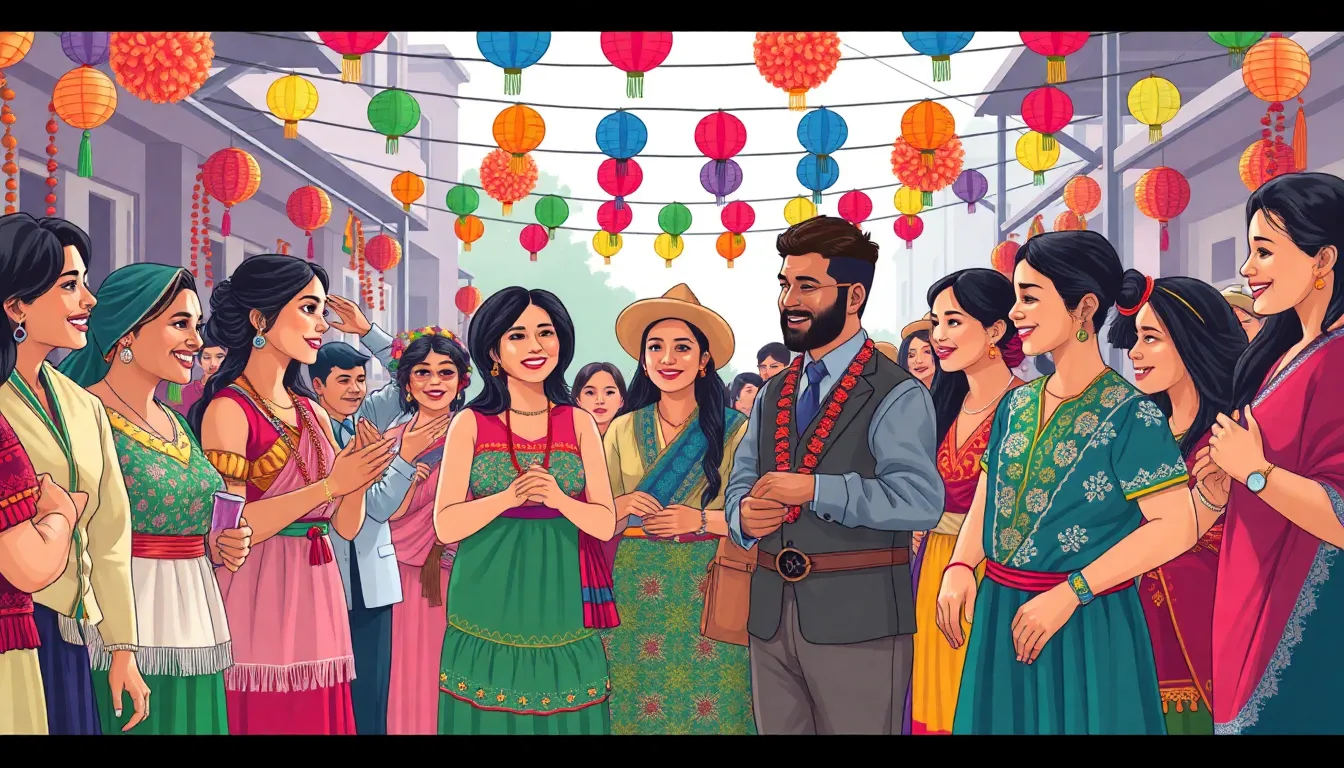Culture isn’t just what you see in museums or on Instagram; it’s the vibrant tapestry that shapes our daily lives. From the food we savor to the music that makes us dance (or at least sway awkwardly), culture is everywhere. It’s the invisible thread weaving together traditions, beliefs, and practices that define communities.
Table of Contents
ToggleDefinition of Culture
Culture encompasses the shared practices, values, and beliefs of a group. It influences how individuals interact, express emotions, and shape their identities. Elements of culture include language, art, rituals, and social norms, all of which create a common framework within a community.
Traditions play a critical role in maintaining cultural identity. They often reflect historical contexts and generational wisdom. People inherit these practices, which reinforces their connection to past and present values. Food acts as another vital component of culture, serving as a symbol of community and heritage. Culinary traditions highlight local ingredients and cooking methods that define a region’s identity.
Language serves as a primary vehicle for communication within cultures. It’s not just a means of conveyance but also a vehicle for preserving traditions and values. Additionally, music and dance express cultural narratives and foster community bonds. These art forms communicate emotions and stories that transcend language barriers.
Religious beliefs often shape cultural practices. They provide moral guidelines and rituals that unify communities. Festivals and ceremonies celebrate important cultural milestones, strengthening communal ties. Adaptation to changing environments is also a key aspect of culture. As groups encounter new challenges, they modify traditions to preserve their identity while embracing innovation.
Understanding the definition of culture requires acknowledging its dynamic nature. Cultures continuously evolve as they interact with one another. Through this exchange, they enrich their practices and broaden their perspectives. Elements of culture intertwine to create a complex tapestry that defines human experience.
Key Components of Culture

Culture comprises several key components that shape the identity and interactions within a community.
Values and Beliefs
Values and beliefs form the foundation of culture. They guide behavior and decision-making. Common beliefs provide a framework for moral guidelines, influencing social structures. For instance, many cultures prioritize family, respect, and community welfare. These values manifest in daily practices, from the way people celebrate holidays to how they interact with one another. Emphasis on education often reflects a culture’s commitment to progress. Additionally, spiritual beliefs may shape rituals and traditions.
Norms and Customs
Norms and customs dictate acceptable behavior within a group. They encompass unwritten rules that guide social interactions and etiquette. Specific practices, such as greetings, dining etiquette, and dress codes, often vary across cultures. Understanding these norms proves essential for effective communication and social harmony. Many societies celebrate unique customs, such as marriage ceremonies or rites of passage, reinforcing cultural identity. Collective observance of these customs fosters a sense of belonging and continuity.
Symbols and Language
Symbols and language play an integral role in cultural expression. Language serves as a primary means of communication, conveying meanings and emotions. In addition, symbols, such as flags, totems, or religious icons, represent deeper cultural values and beliefs. Different cultures utilize various languages, dialects, and regional sayings that enrich their uniqueness. Through storytelling and shared vocabulary, language preserves tradition and fosters connection among members. The significance of symbols extends beyond mere representation, as they embody history and collective memory.
Art and Aesthetics
Art and aesthetics manifest a culture’s creativity and worldview. Visual arts, music, and literature reflect cultural narratives and social values. Different art forms often capture historical events or collective experiences. Each culture expresses beauty in unique ways, influencing perceptions of aesthetics. For example, traditional crafts and contemporary art reveal a community’s values and emotions. Participation in artistic activities strengthens community bonds. Appreciation for diverse art forms promotes cultural exchange and understanding, enhancing global perspectives.
Influence of Environment on Culture
Environment plays a crucial role in shaping culture. Physical surroundings impact cultural practices, beliefs, and social interactions. Climate conditions influence dietary habits and clothing choices. For example, warmer climates lead to lighter fabrics and tropical cuisine, while colder environments encourage heavier attire and hearty meals.
Natural resources also dictate cultural elements. Availability of water, fertile land, and minerals affects agricultural practices and trade. Regions rich in seafood foster culinary traditions centered around fish, while areas with abundant forests inspire woodcraft and traditional housing styles. Each of these factors enriches cultural identity.
Social environments, such as urban versus rural settings, contribute distinct cultural expressions. Urbanization brings diverse populations together, leading to multicultural influences. Rural areas often maintain traditional practices, emphasizing local customs and familial ties. Interaction patterns differ based on these settings, influencing communication styles and community dynamics.
Technology’s presence within environments alters cultural landscapes. Innovations shape how communities express art, share food experiences, and interact socially. Digital platforms allow global cultural exchange, creating hybrid forms and new traditions.
Geographical features further affect cultural attitudes and lifestyles. Mountainous regions may cultivate values like resilience and self-reliance, while coastal communities prioritize cooperation and adaptability. These characteristics become woven into the community’s collective identity.
Cultural expressions also reflect environmental challenges, such as climate change and resource scarcity. Adaptations in behaviors and practices arise in response to these pressures, showcasing the dynamic nature of culture. Overall, understanding the influence of the environment provides insight into the diverse expressions of culture across different communities.
Conclusion
Understanding the components of culture reveals its profound impact on daily life. Each element from language to art plays a vital role in shaping identities and fostering connections within communities. As culture evolves through interactions and environmental influences, it remains a dynamic force that reflects the richness of human experience. Embracing this complexity enhances appreciation for diverse traditions and practices. By recognizing the significance of cultural components, individuals can cultivate a deeper understanding of their own identities and those of others, ultimately promoting a more inclusive and harmonious society.





